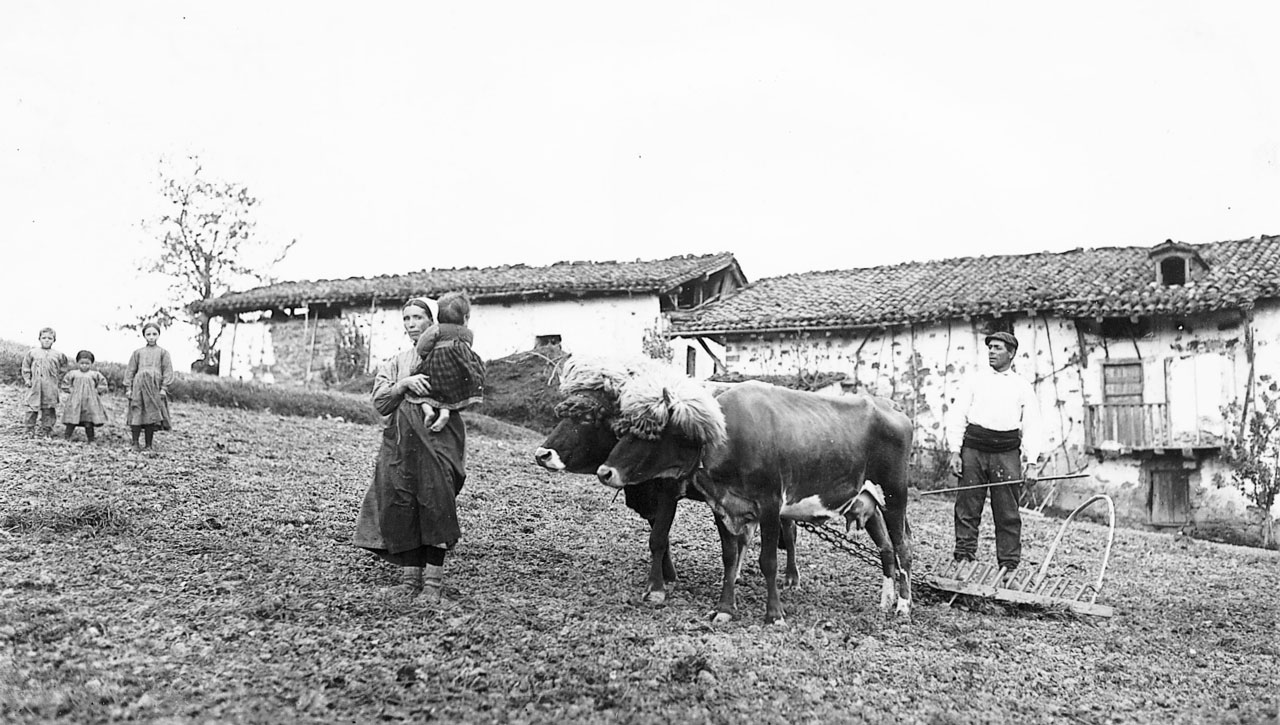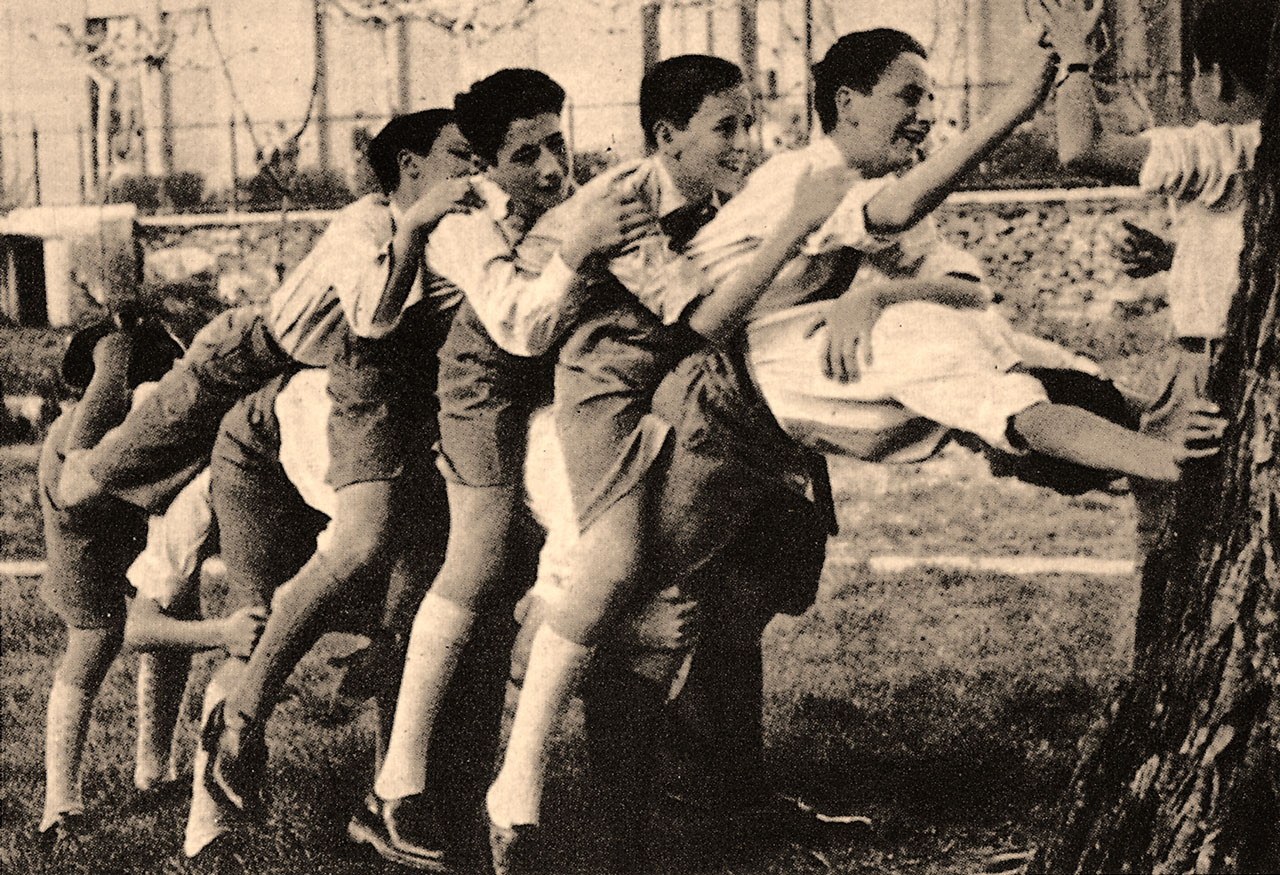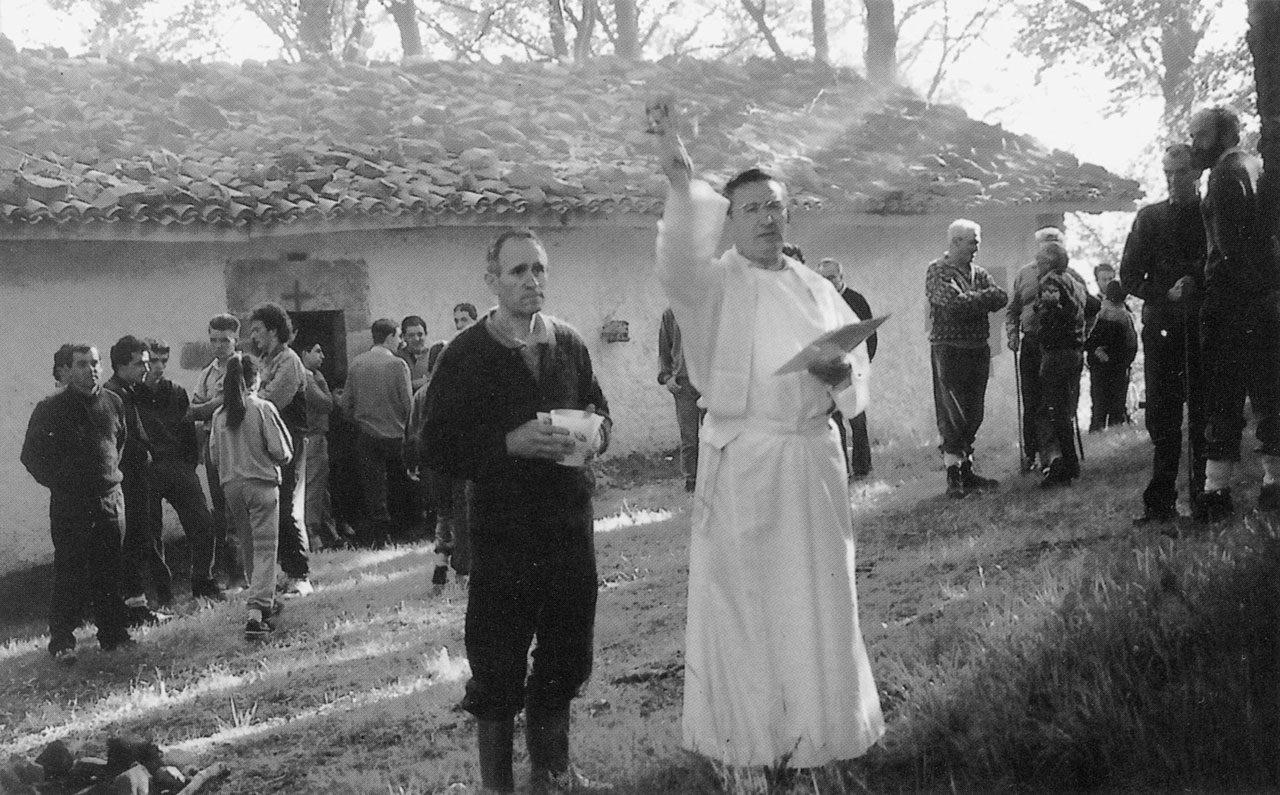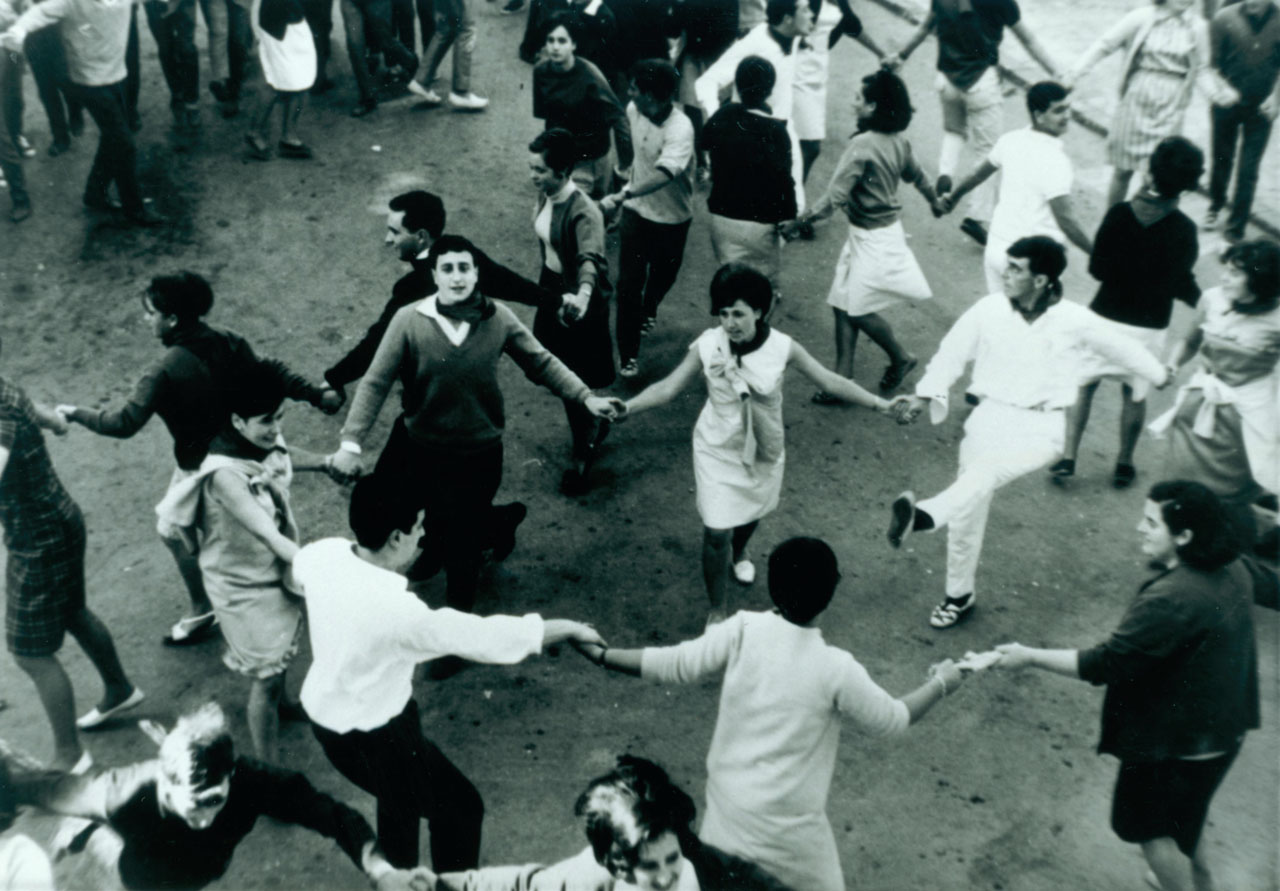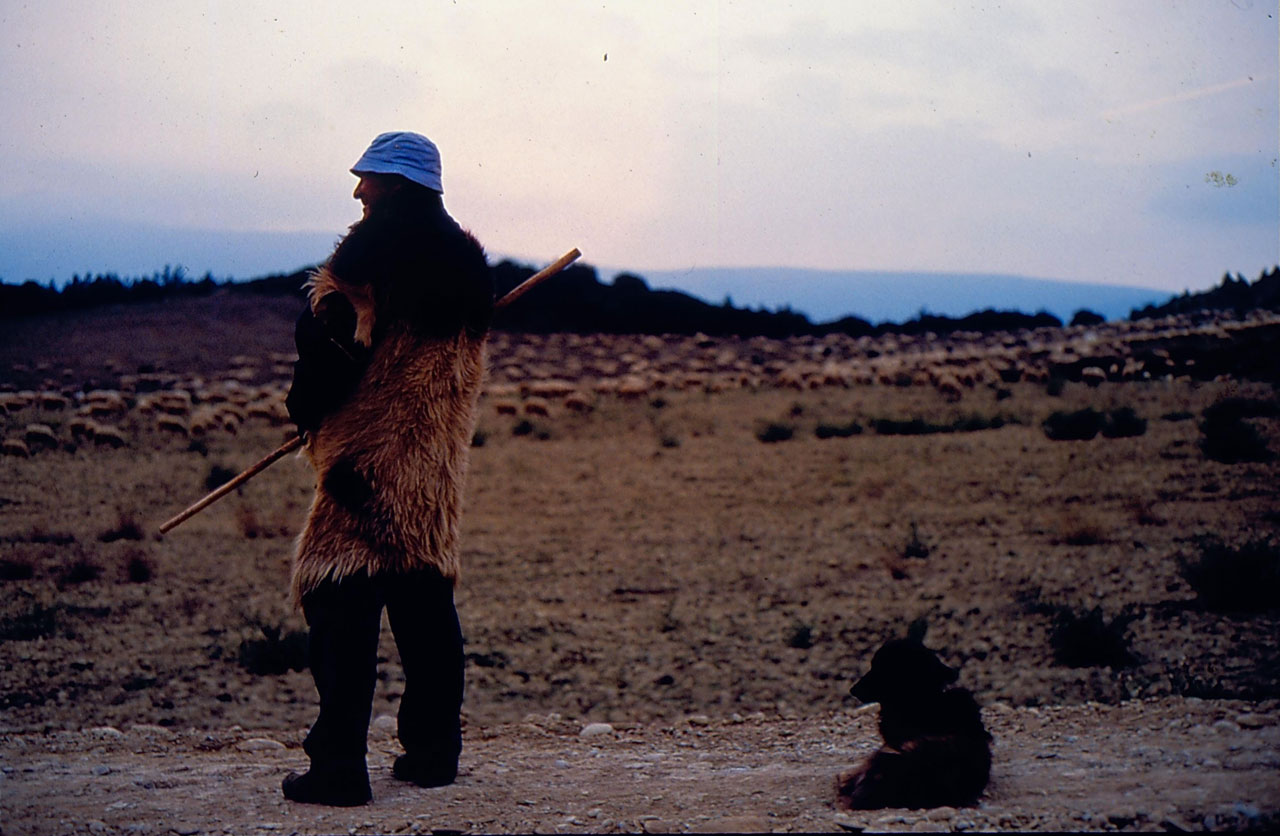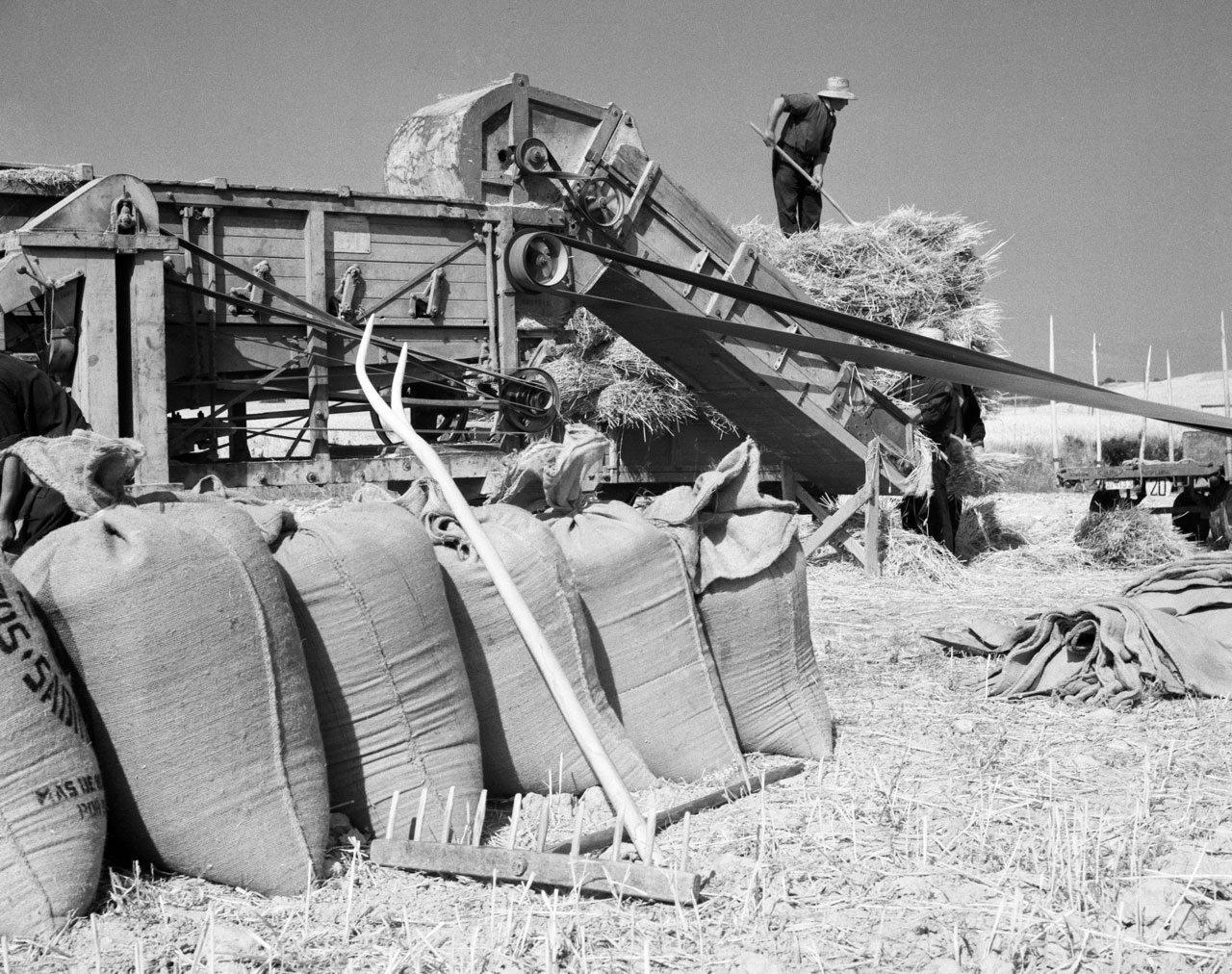Diferencia entre revisiones de «Main Page/en»
De Atlas Etnográfico de Vasconia
| Línea 59: | Línea 59: | ||
====[/atlas/alimentacion/Dando-brillo-al-pan.jpg|Brushing the loaves for a shiny crust. Source: Ander Manterola, Etniker Euskalerria Groups.|Nolako irina, halako ogia.<br /> | ====[/atlas/alimentacion/Dando-brillo-al-pan.jpg|Brushing the loaves for a shiny crust. Source: Ander Manterola, Etniker Euskalerria Groups.|Nolako irina, halako ogia.<br /> | ||
| − | ''Bad flour makes poor dough.''|| | + | ''Bad flour makes poor dough.''||]==== |
| − | ====[/atlas/alimentacion/Mercado-de-Navidad-Vitoria-Gasteiz-1977.jpg|Christmas market. Vitoria-Gasteiz, 1977. Source: Fernando Díaz de Corcuera, Etniker Euskalerria Groups.|Aza-olioak pil-pil, <br />bisigua zirt-zart, <br />gaztaina erreak pin-pan, <br />ahia goxo-goxo, epel-epel. <br /><br />''Traditional Christmas song''|| | + | ====[/atlas/alimentacion/Mercado-de-Navidad-Vitoria-Gasteiz-1977.jpg|Christmas market. Vitoria-Gasteiz, 1977. Source: Fernando Díaz de Corcuera, Etniker Euskalerria Groups.|Aza-olioak pil-pil, <br />bisigua zirt-zart, <br />gaztaina erreak pin-pan, <br />ahia goxo-goxo, epel-epel. <br /><br />''Traditional Christmas song''||]==== |
====[/atlas/alimentacion/Secado-Ispoure.jpg|Hanging for drying. Izpura (NB). Source: Peio Goïty, Etniker Euskalerria Groups.|Ezkonduko urtea eta txarria hildako astea, onenak. <br /> | ====[/atlas/alimentacion/Secado-Ispoure.jpg|Hanging for drying. Izpura (NB). Source: Peio Goïty, Etniker Euskalerria Groups.|Ezkonduko urtea eta txarria hildako astea, onenak. <br /> | ||
| − | ''The year when you marry and the week that pig is slaughtered are the best.''|| | + | ''The year when you marry and the week that pig is slaughtered are the best.''||]==== |
| − | ====[/atlas/alimentacion/Abriendo-los-cortes-tras-la-fermentacion.jpg|Scoring after fermentation. Source: Ander Manterola, Etniker Euskalerria Groups.|Donde no hay ni pan ni pollos, el horno no está para bollos. <br />''If there’s no bread or chicken, you shouldn’t bake rolls.''|| | + | ====[/atlas/alimentacion/Abriendo-los-cortes-tras-la-fermentacion.jpg|Scoring after fermentation. Source: Ander Manterola, Etniker Euskalerria Groups.|Donde no hay ni pan ni pollos, el horno no está para bollos. <br />''If there’s no bread or chicken, you shouldn’t bake rolls.''||]==== |
| − | ====[/atlas/alimentacion/Merienda-principios-del-siglo-20.jpg|Snack break, beginning of the 20th century. Source: Archive of the Chartered Government of Gipuzkoa: Indalecio Ojanguren Collection.|Goseak dagonarentzat, ogi gogorrik ez. <br />''The famished make a feast out of bread crumbs.''|| | + | ====[/atlas/alimentacion/Merienda-principios-del-siglo-20.jpg|Snack break, beginning of the 20th century. Source: Archive of the Chartered Government of Gipuzkoa: Indalecio Ojanguren Collection.|Goseak dagonarentzat, ogi gogorrik ez. <br />''The famished make a feast out of bread crumbs.''||]==== |
| − | ====[/atlas/alimentacion/Mercado-de-Santo-Tomas-Bilbao-1950.jpg|Ribera Market. Bilbao, beginning of the 20th century. Source: Labayru Fundazioa Photograhic Archive.|Food was grown on the family small holding or bought from local markets, which, in turn, were supplied with food grown locally. A few products, nearly always non-staples, complemented local or household self-supply.|| | + | ====[/atlas/alimentacion/Mercado-de-Santo-Tomas-Bilbao-1950.jpg|Ribera Market. Bilbao, beginning of the 20th century. Source: Labayru Fundazioa Photograhic Archive.|Food was grown on the family small holding or bought from local markets, which, in turn, were supplied with food grown locally. A few products, nearly always non-staples, complemented local or household self-supply.||]==== |
| − | ====[/atlas/alimentacion/Comida-a-bordo.jpg|Meal on board. Source: Aguirre Archive.|Nahiz dala udea, <br />nahiz dala negua, <br />goizeko zortziretan, <br />armozu ordua. <br /><br />''Folk song''|| | + | ====[/atlas/alimentacion/Comida-a-bordo.jpg|Meal on board. Source: Aguirre Archive.|Nahiz dala udea, <br />nahiz dala negua, <br />goizeko zortziretan, <br />armozu ordua. <br /><br />''Folk song''||]==== |
| − | ====[/atlas/alimentacion/Caserio-Olabide-Zerain-1982.jpg|Olabide Farmhouse. Zerain (G), 1982. Source: Karmele Goñi, Etniker Euskalerria Groups.|Sueteko laratzak jakiten dau etxeko barri. <br />''People show their true colours at home.''|| | + | ====[/atlas/alimentacion/Caserio-Olabide-Zerain-1982.jpg|Olabide Farmhouse. Zerain (G), 1982. Source: Karmele Goñi, Etniker Euskalerria Groups.|Sueteko laratzak jakiten dau etxeko barri. <br />''People show their true colours at home.''||]==== |
| − | ====[/atlas/alimentacion/Desgranando-habas.jpg|Broad bean podding. Source: Akaitze Kamiruaga, Etniker Euskalerria Groups.|Beans and broad beans were the most widely grown legumes and were traditionally an important part of the diet.|| | + | ====[/atlas/alimentacion/Desgranando-habas.jpg|Broad bean podding. Source: Akaitze Kamiruaga, Etniker Euskalerria Groups.|Beans and broad beans were the most widely grown legumes and were traditionally an important part of the diet.||]==== |
| − | ====[/atlas/alimentacion/Mercado-de-Santo-Tomas-Bilbao-1950.jpg|Market on St Thomas’ Day. Bilbao, 1950. Source: Sancho el Sabio Foundation.|Gabon, bon-bon; Natibitate, ase eta bete; San Estebantxe, lehen letxe. <br />''Eat heartily on Christmas Eve; until you feel full at Christmas; and back to normal on St Stephen’s Day.''|| | + | ====[/atlas/alimentacion/Mercado-de-Santo-Tomas-Bilbao-1950.jpg|Market on St Thomas’ Day. Bilbao, 1950. Source: Sancho el Sabio Foundation.|Gabon, bon-bon; Natibitate, ase eta bete; San Estebantxe, lehen letxe. <br />''Eat heartily on Christmas Eve; until you feel full at Christmas; and back to normal on St Stephen’s Day.''||]==== |
| − | ====[/atlas/alimentacion/Abrir-el-txotx-Gipuzkoa-1988.jpg|Txotx, cider tasting. Gipuzkoa, 1988. Source: Antxon Aguirre, Etniker Euskalerria Groups.|On dagizula janak eta kalterik ez edanak. <br />''Enjoy what you eat and drink.''|| | + | ====[/atlas/alimentacion/Abrir-el-txotx-Gipuzkoa-1988.jpg|Txotx, cider tasting. Gipuzkoa, 1988. Source: Antxon Aguirre, Etniker Euskalerria Groups.|On dagizula janak eta kalterik ez edanak. <br />''Enjoy what you eat and drink.''||]==== |
| − | ====[/atlas/alimentacion/Ronda-del-rosco-el-dia-de-San-Cristobal-Oquina-1986.jpg|Round of the roll on St Christopher’s Day. Oquina (A), 1986. Source: Gerardo López de Guereñu Iholdi, Etniker Euskalerria Groups. <br />''Bread and wine hold body and soul together.''|| | + | ====[/atlas/alimentacion/Ronda-del-rosco-el-dia-de-San-Cristobal-Oquina-1986.jpg|Round of the roll on St Christopher’s Day. Oquina (A), 1986. Source: Gerardo López de Guereñu Iholdi, Etniker Euskalerria Groups. <br />''Bread and wine hold body and soul together.''||]==== |
Revisión del 15:00 10 feb 2020
Mutual cooperation. Zeanuri (B), c. 1915. Source: Labayru Fundazioa Photograhic Archive: Felipe Manterola Collection.
House and Family in the Basque Country


House and Family in the Basque Country
The rural farmstead was an institution made up of the building, its land, its dwellings and by tradition, in other words, by that web of relations that closely links the current generation with past ones.
Family Diet in the Basque Country


Family Diet in the Basque Country
Food was grown on the family small holding or bought from local markets, which, in turn, were supplied with food grown locally. A few products, nearly always non-staples, complemented local or household self-supply.
Vegetal clothing and accessories. Egozkue (N), 1967. Source: José Zufiaurre, Etniker Euskalerria Groups.
Children’s Games in the Basque Country


Children’s Games in the Basque Country
Akerrak adarrak okerrak ditu, adarrak okerrak akerrak ditu, okerrak adarrak akerrak ditu. Tongue-twister
Traditional Medicine in the Basque Country


Traditional Medicine in the Basque Country
Ez da gaitzik aldiak ez daroanik. Time cures everything.
Rites from Birth to Marriage in the Basque Country


Rites from Birth to Marriage in the Basque Country
Gazteak, badakizue zelan dantzan egin: burua gora-gora ta kaderai eragin. Folk verse
Funeral Rites in the Basque Country


Funeral Rites in the Basque Country
Death was an event that usually occurred in the neighbourhood, a fact that meant the home of the deceased played a leading role.
Herder and dog. Droveway of the Roncalese (N), 1996. Source: Iñaki San Miguel, Etniker Euskalerria Groups.
Livestock Farming and Shepherding in the Basque Country


Livestock Farming and Shepherding in the Basque Country
The introduction of sheepdogs meant they replaced the zagales, young children who had been in charge of herding the flock up to then.
Agriculture in the Basque Country


Agriculture in the Basque Country
Maiatz luzea, gosea; garagarrilak ekarriko du asea. A very wet May, much straw and little grain.
